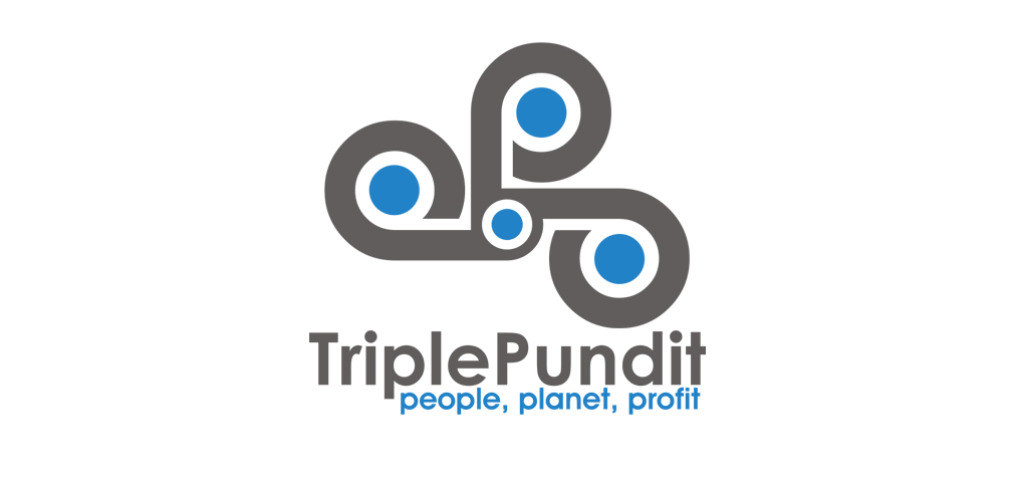
Triple Pundit – 10 Reasons to Put a Social Mission at the Heart of Your Marketing
This article by Ripple founders, Glenn Turner & Shayna Samuels was published on Triple Pundit on October 8, 2014. Original link can be found here.
From L’Oreal’s new sustainability campaign to General Mills’ recent acquisition of Annie’s Inc. natural and organic foods (at 37 percent above the stock valuation), big brands are catching on to the fact that today’s consumers are looking for a lot more than a pretty package and a good deal. They’re looking for products with purpose and brands who care about more than just the bottom line. And if today’s entrepreneurs want to survive in an increasingly crowded marketplace, they need to take a page from the playbook of pioneers like Seventh Generation and Ben and Jerry’s, whose mission-based business models and marketing have catapulted them from a corner in the co-op to every mainstream grocery store in America.
A growing body of market research is proving this isn’t simply a trend, it’s a tidal shift in our economy. Here are 10 facts about modern consumers and how their demand for socially conscious businesses is driving marketplace evolution.
- No. 1: 86 percent of global consumers believe that business needs to place at least equal weight on society’s interests as on business’ interests.
- No. 2: 91 percent of U.S. consumers are likely to switch brands to one associated with a good cause, given comparable price and quality.
- No. 3: 50 percent of global consumers said they would be willing to reward companies that give back to society by paying more for their goods and services.
Translation: Brands need to find something they’re passionate about that benefits the common good because commitment to a cause leads to higher customer acquisition. In years past, “do-gooders” have launched their efforts from within the walls of philanthropic foundations, nonprofit organizations, or government agencies. Increasingly, nonprofits and for-profits are collaborating on social change initiatives and social entrepreneurs are creating a whole new business model as the lines separating sectors blur entirely. As this paradigm becomes the status quo, cross-sector collaboration and cause marketing will be imperative for brand success. To do well, you must do good – consumers will expect nothing less.
- No. 4: 90 percent of U.S. consumers would be more loyal to companies that back causes.
- No. 5: 47 percent of consumers have bought a brand at least monthly that supports a cause, representing a 47 percent increase from 2010. There’s also been a 39 percent increase in how many consumers “would recommend” cause-related brands.
- No. 6: 75 percent of U.S. consumers say they would donate, volunteer and tell friends and family about a company’s social impact efforts if given the opportunity.
Translation: Commitment to a cause also leads to customer retention and the Holy Grail of marketing methods – word-of-mouth, peer-to-peer recommendations. People have values and personal passions, so it should come as no surprise that, given the choice, they’d prefer to align themselves with and talk about companies who share their values and support their preferred causes. Beyond providing a product or service, you’re giving them something to believe in and feel good about. By adopting nonprofit ideology into the for-profit business model, entrepreneurs don’t just attract customers, they build a community of loyal brand ambassadors.
- No. 7: 93 percent of consumers want to know what companies are doing to make the world a better place.
- No. 8: Buzzwords are not convincing and only 11-15 percent of consumers are confident about terms like “natural,” “organic,” “sustainable,” “fair trade,” “green,” and “eco-friendly.”
- No. 9: 71 percent of consumers report being confused by the message companies use to talk about their efforts and impacts.
Translation: Consumers want to know what brands are doing, but brands aren’t effectively communicating. Trendy marketing claims aren’t cutting it – consumers want transparency and clarity. Beyond traditional advertising and marketing, successful mission-driven media campaigns (like those outlined in this new report) are complex communications strategies involving inspiring stories, credible spokespeople, and opportunities for meaningful discussion. At its essence, it’s “content marketing” and it’s an age old tactic employed by the nonprofit sector to connect with constituents and drive people to action. If a business wants to effectively communicate and to be seen as authentic in their mission, much can be learned from the nonprofit sector.
- No. 10: 41 percent of consumers rely on news media to gauge whether a company is socially responsible.
Translation: What your website and packaging says about you isn’t nearly as important as what the media says about you. In a world saturated with advertising, consumers are learning to mute the noise (both literally and figuratively). Again, strategies modeled after nonprofit communications and content marketing are proving to be much more effective at both garnering attention and establishing authority and credibility.
Ultimately, there’s an enormous opportunity in this new market landscape for social entrepreneurs, mission-driven brands, nonprofits and any organization seeking social change. But in a marketplace flooded with causes, authenticity combined with articulate storytelling and strategic media placement are vital to rise above the noise and make a real connection with consumers. Learn how to develop and execute a successful communications strategy using Ripple Strategies’ new report, “How to Use the Media for Social Change.” Take your marketing and your brand to the next level with tips and insights based on case studies and over a decade of experience.
